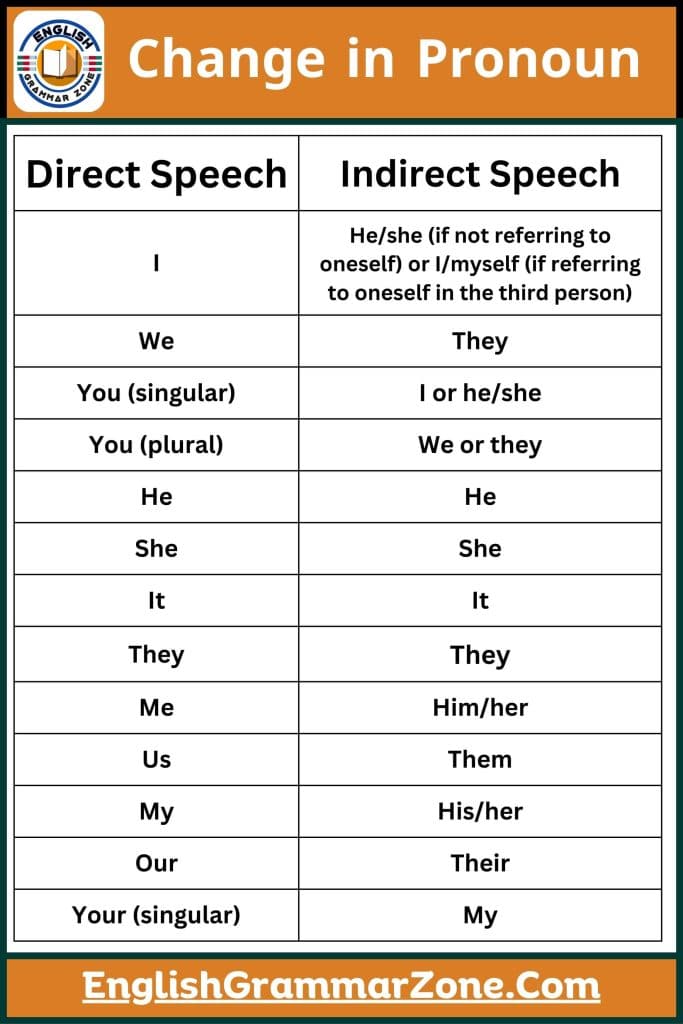
Change in Pronoun
| Direct Speech | Indirect Speech |
| I | He/she (if not referring to oneself) or I/myself (if referring to oneself in the third person) |
| We | They |
| You (singular) | I or he/she |
| You (plural) | We or they |
| He | He |
| She | She |
| It | It |
| They | They |
| Me | Him/her |
| Us | Them |
| My | His/her |
| Our | Their |
| Your (singular) | My |
| Your (plural) | Our |
| His | His |
| Her | Her |
| Their | Their |
| Mine | His/hers |
| Yours (singular) | Mine |
| Yours (plural) | Ours |
| His | Theirs |
| Hers | Hers |
| Its | Its |
| Theirs | Theirs |
Direct Speech to Indirect Speech Pronoun Changes1. First Person Pronouns:
In indirect speech, the pronoun ‘I’ changes to ‘he’ or ‘she’, depending on the context of who is speaking. If the speaker is referring to themselves in the third person, they might use ‘I’ or ‘myself’ in the indirect speech. 2. Second Person Pronouns:
In indirect speech, ‘you’ changes to ‘she’, ‘he’, or the speaker might use ‘I’ or ‘me’ depending on the context. 3. Third Person Pronouns:
Third person pronouns like ‘he’, ‘she’, ‘it’, and ‘they’ generally remain unchanged in indirect speech. 4. Possessive Pronouns:
Possessive pronouns (‘my’, ‘our’, ‘your’, ‘his’, ‘her’, ‘its’, ‘their’) change according to the subject in indirect speech. For example, ‘my’ changes to ‘her’ or ‘his’, depending on the context and the reported speech. 5. Reflexive Pronouns:
Reflexive pronouns like ‘myself’, ‘yourself’, ‘himself’, ‘herself’, ‘itself’, ‘ourselves’, ‘yourselves’, and ‘themselves’ change similarly to other pronouns in indirect speech, maintaining the same form. 6. Demonstrative Pronouns:
Demonstrative pronouns (‘this’, ‘that’, ‘these’, ‘those’) also change based on the subject and context in indirect speech. |